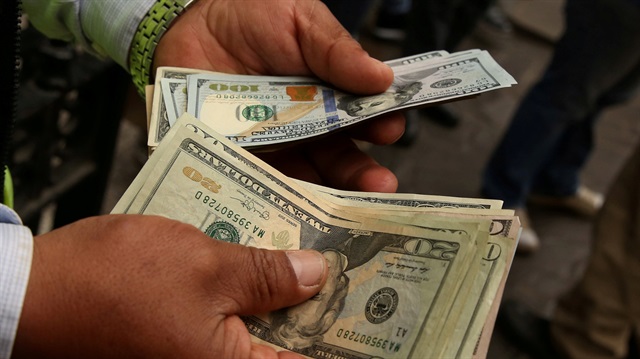
Two of the Muslim world’s largest economies, Turkey and Indonesia, have announced ambitious plans for infrastructure development. More than anything, the funding of these ambitions will be the main challenge. Faced with inadequate domestic savings and capital formation, the financing of development infrastructure becomes a huge challenge for developing countries. They often have little choice besides borrowing externally to fund pressing development needs. Such debt financing however, causes a number of problems. First, they face exchange rate risk given the mismatch between the denomination of the debt and the home currency. The borrowing nation is also faced with foreign interest rate exposure. On top of this, debt increases the nation’s leverage and thereby raises macroeconomic vulnerability to external shocks. Finally, debt reduces financial flexibility, since a nation will not be able to borrow beyond a certain debt/GDP ratio – or debt capacity. Despite these obvious shortcomings, developing nations have little choice but to borrow. Governments, unlike private companies, cannot issue equity.
To avoid the web of vulnerability that comes with debt financing, both these nations (Turkey and Indonesia) should look to recent developments in Islamic finance. Sukuk based on modified Mudarabah contracts, being risk-sharing, mimic the payoff profile of equity and thereby avoid the leverage of debt financing. Many of the intended projects like Kanal Istanbul or Jakarta’s Mass Rapid Transit system will have huge economic impact by reducing congestion and thereby enhancing efficiency. These are classic development projects that require heavy upfront investment but will provide steady benefits to society over very long future periods. Given the large scale and the monopolistic nature of these projects, they typically produce very stable cash flows over their long economic life. Such a risk-return profile will be well-suited for long term investors like Pension funds, Insurance/Takaful companies and Sovereign Wealth Funds.
While such projects, given the low technical and demand side risk, may be the proverbial “low hanging fruits” of developing economics, the world is replete with projects that failed because of the way they were funded. The Channel Tunnel in Europe, the High Speed Railway in Taiwan and the Hambanthota Port in Sri Lanka are famous recent cases of projects that failed due to funding structure. These were projects that overcame technological challenges but failed due to the way their financing was structured. In each case, the overhang of debt was too burdensome given project cash flow. In the case of the Channel Tunnel and Taiwan’s High Speed Railway, there had to be a series of financial restructuring and equity injection for the projects to survive. In the case of Sri Lanka, the entire port had to be handed over to its Chinese lenders on lease for 99 years.
The risk sharing contracts of Islamic finance offer a way out of the dilemma of how to fund needed development infrastructure without resorting to debt. As an illustration, a government could initiate a project and contribute land and other in- kind benefits, equivalent to about 10 percent of project value. An Istisna-Mudarabah sukuk would be issued at project initiation to raise the needed investment. These sukuk being participatory, provide no dividends during construction but do so based on the profit-sharing ratio once the project generates revenue. The periodic repayment to sukuk holders would constitute both a profit portion and amortization of the invested capital. Sukuk holders jointly own 90 percent of the project initially, however, as the project generates revenue and pays out the profit portion and amortizes the capital, the sukuk holders portion of equity/ownership reduces, while that of the government increases. The government is effectively buying back equity in the project. The repayment schedule has the flexibility that enables the government to pay more during good times and less when times are bad. Equity kicker provisions within the contract would require the government to reimburse sukuk holders with equity for any accumulated shortfall at contract maturity. Since the valuation of the equity is based on value at the beginning of the project, sukuk holders are not guaranteed full recovery of their initial investment. This is in line with the risk-sharing principle.
An alternative arrangement could be to structure the sukuk as a convertible. That is, a convertible Istisna- Mudarabah sukuk. Here, following some years of dividend payments and the full development of all ancillary parts of the project that may also generate revenue, the entire project can be listed on the domestic stock exchange through an IPO (initial public offer). Following the IPO, the project becomes a listed entity with both the sukuk holders and government becoming equity holders. The up side comes with listing accrues to both parties. The advantage of this latter structure is that there is even less stress on the government’s budget as there are no repayments of principal.
In addition to providing an alternative to debt, such risk-sharing instruments can bring many tangible benefits. With listing and trading of the sukuk, domestic capital markets are developed and, perhaps more importantly, the Islamic banking sector gets a viable instrument for its liquidity management. By offering at least a portion of the sukuk in small denomination, financial inclusion and mass mobilization of funds for development becomes feasible. Finally, when several such projects have been undertaken, project risks can be diversified by bundling the sukuk tranches in ETF-like instruments. For nations aspiring to develop sustainably, there may not be a better time to consider this risk-sharing alternative to debt.














